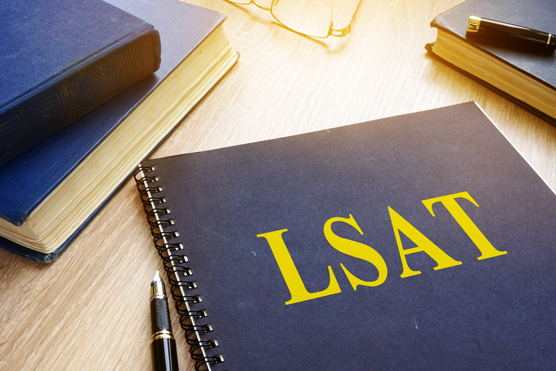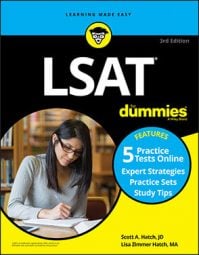 © Vitalii Vodolazskyi
© Vitalii VodolazskyiHow to have a successful LSAT testing experience
Doing well on the LSAT requires preparation. To optimize your test-taking experience and get the best score possible, follow these tips for registering for and studying for the test, getting your mind and body prepared, and exercising specific strategies while taking the test.
Before the test:
- Register ahead of time — at least two months before the test date — because some test centers fill up quickly. Check the Law School Admission Council website for official regular and late registration deadlines.
- Start studying early; don’t wait until the night before the test. Master the strategies for each test section and solidify them by inundating yourself with practice exams.
- For at least the three nights before the test, get a consistent seven to eight hours of sleep every night.
- Make sure you’re familiar with the test location. Take a practice drive to the site on the same day of the week and at about the same time as when you’ll be heading to the exam. Check out the traffic, potential construction zones, and available parking.
The night before the test:
- Set your alarm (or two); give yourself enough time to get there.
- Plan and prepare your breakfast for the next morning. Combine complex carbs and protein to get and stay energized for the test.
- Assemble the following supplies in a clear, 1-gallon plastic bag and place it next to the door or in your car so you don’t forget it:
- Admission ticket with a recent (within the last six months) 2-inch-by-2-inch passport-type photo of you
- Driver’s license or other official photo ID (such as a passport)
- Water or other beverage in a container that holds a maximum of 20 ounces
- Several sharp No. 2 or HB pencils, a hand pencil sharpener, and a big eraser to use as you keep notes on the provided scratch paper
- A snack for the break
The morning of the test:
- Get to the testing site early enough to park and find your room without panicking.
- Visit the restroom before testing starts.
- Place your sealed plastic bag with the acceptable contents under your seat.
- Welcome the confidence and adrenaline boost you feel as you anticipate the test; both will keep you alert and focused throughout the exam.
During the test:
- Answer every question — there’s no penalty for guessing.
- Keep track of your time.
- If you get stuck, guess, mark the question, and move on.
- Maintain focus, even if you’re bored out of your mind.
- Take an occasional short break (no more than ten seconds, though).
After the test:
- If you want to cancel your score (only if you have a really good reason), do it within six days of your test date.
- Wait for your score to arrive; use this time to research law schools or work on other application components, such as crafting a personal statement or requesting reference letters.
- Repeat the LSAT if necessary.
Tips for the analytical reasoning section of the LSAT
Analytical reasoning questions may seem impossible to answer until you learn how to apply a strategic approach. With practice, determining the game type, developing a game board, and evaluating the various conditions will become almost second nature. You may eventually find these questions to be almost easy!
- Stay calm and focused — remember, you can do these!
- Work one problem at a time; work the whole problem, and then move on to the next one.
- Read the facts carefully. Determine whether you’re working an ordering game or a grouping game.
- Create a game board with a list of game pieces, a box chart, and a record of the rules in shorthand.
- Expand the game board by making connections between the rules and creating possible orders or assignments.
- Almost always, the first question in the set simply involves an application of the rules. So, if you’re having trouble expanding your game board, tackle the first question to help you focus.
- Read the questions carefully. Note whether your answer could be true, must be true, could be false, or must be false.
- Check all answers and rely on the process of elimination.
- For questions that ask what must be true, eliminate answer choices that either must be false or could be false.
- For questions that ask what must be false, eliminate answer choices that either must be true or could be true.
- For questions that ask what could be true, eliminate answers that must be false.
- For questions that ask what could be false, eliminate answers that must be true.
- If a question seems difficult at first, try another question in the same section. Solving some questions in the set may help you answer others in the set.
- When you finish one problem, forget it, and clear your brain for the next one.
Tips for the reading comprehension section of the LSAT
Reading for the LSAT isn’t the same as reading for pleasure or even for college coursework. You have very little time to comprehend the material and make reasoned analyses, so make sure you keep these tips in mind to maximize your limited time.
- Concentrate, concentrate, concentrate — even if you’re bored.
- Work one reading passage at a time; answer all of the questions, and then move on.
- Skim the passage for structure.
- Focus on the big stuff and gloss over the details, going back to them if the questions ask you about them.
- Mark important points in the passage, but don’t mark too much.
- Refer back to the passage as often as necessary.
- Try answering questions without reading the passage first.
- If the questions direct you to a specific word or line, read several lines above and below it so you understand the context.
- Don’t use any information not contained in the passage; forget what you know or believe about the subject.
- Read all answers and eliminate the wrong ones.
- If the question asks you for what the passage states, indicates, or asserts, the right answer is a statement or paraphrase of information directly stated in the passage, so don’t make an inference.
- If the question asks you for what the passage implies or suggests, the right answer requires a logical inference based solely on the passage.
- When you finish a passage, forget it and clear your brain for the next one.
Tips for the logical reasoning section of the LSAT
Logical reasoning questions come in a variety of types, and each requires a slightly different approach. Review these tips to remain focused throughout the two LSAT logical reasoning sections.
- Read the questions first so you know what kind of question you have to answer before you read the short passage.
- For strengthen or weaken questions, determine what type of reasoning the argument uses and choose an answer that either helps or hurts that way of reasoning.
- For questions that ask you to draw conclusions, choose an answer that contains an element of all the author’s premises.
- The correct answer to an inference question usually concerns just one or two of the pieces of information.
- Assumption questions ask you to choose an answer that states a premise the author assumes to be true but doesn’t state directly. The right answer often links the last premise to the conclusion.
- For method of reasoning questions, break down the argument into its basic components. Use letters such as A, B, and C to represent those components.
- For questions that ask you to resolve a discrepancy or explain a paradox, find the answer that makes both apparently contradictory statements possible.
Tips for the writing sample section of the LSAT
The only LSAT section for which the correct answer isn’t right there in front of you is the writing sample. The Law School Admission Council (LSAC) doesn’t score your essay, but admissions committees will likely read it. To make a good impression, heed this advice:
- Pick a side — either side will do. There’s no right answer.
- Take a moment to outline your essay.
- Write the essay in four or five paragraphs.
- Explain your position and ward off any potential attacks.
- Finish the essay smoothly; don’t just drop your reader when you reach the end of the page.
- Don’t end the section early. If you have extra time, proofread!
- Though the writing sample isn’t scored, it could make or break your entrance into law school if you’re being compared with other, similar candidates.

